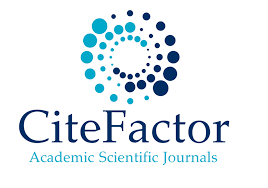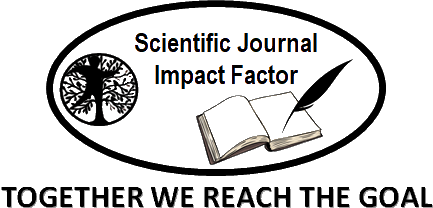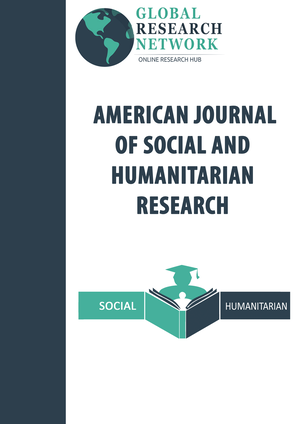The Potential of Additive Manufacturing Technology in Customizing Bone Implants to Fit Human Anatomy
Abstract
Keywords
Full Text:
PDFReferences
D. Holt, M. Hueman, J. Bailey, and E. Elster, “Clinical Readiness Program : Refocusing the Military Health System Clinical Readiness Program : Refocusing the,” no. January, 2021, doi: 10.1093/milmed/usaa385.
D. Cahyandari, “Rapid Prototyping Technology Untuk Aplikasi Pembuatan Implan Tulang dan Gigi,” Traksi, vol. 16, no. 1, pp. 35–41, 2016, [Online]. Available: https://jurnal.unimus.ac.id/index.php/jtm/article/view/2340%0Ahttps://jurnal.unimus.ac.id/index.php/jtm/article/viewFile/2340/2314.
M. D. A. Athallah, S. Sugiyanto, and ..., “Pengaruh Temperatur Nozzle 3D Print Terhadap Flexural Strength Biokomposit Berbahan Pla, Pcl, Dan Hidroksiapatit Dari …,” J. Tek. Mesin, vol. 10, no. 2, pp. 249–254, 2022, [Online]. Available: https://ejournal3.undip.ac.id/index.php/jtm/article/view/33760%0Ahttps://ejournal3.undip.ac.id/index.php/jtm/article/download/33760/26874.
A. Chanda, Biomedical Materials for Multi- functional Applications Series Editors. .
N. Koju, S. Niraula, and B. Fotovvati, “Additively Manufactured Porous Ti6Al4V for Bone Implants: A Review,” Metals (Basel)., vol. 12, no. 4, 2022, doi: 10.3390/met12040687.
G. . Booysen, A. . van der Merwe, and D. J. de Beer, “ADDITIVE MANUFACTURING FOR SUSTAINABLE CUSTOM-DESIGNED IMPLANTS G.J. Booysen 1 *, A.F. van der Merwe 2 & D.J. de Beer 1 ARTICLE INFO,” South African J. Ind. Eng., vol. 30, no. November, pp. 21–31, 2019.
D. Listyarifah, G. Fortuna, R. C. Pramuditya, A. H. Dewi, and R. Ardhani, “Kompatibilitas bahan implan tulang hidroksiapatit dan karbonat hidroksiapatit di jaringan lunak,” Maj. Kedokt. Gigi Klin., vol. 8, no. 3, p. 87, 2023, doi: 10.22146/mkgk.83547.
B. Oladapo, A. Zahedi, S. Ismail, W. Fernando, and O. Ikumapayi, “3D-printed biomimetic bone implant polymeric composite scaffolds,” Int. J. Adv. Manuf. Technol., vol. 126, no. 9–10, pp. 4259–4267, 2023, doi: 10.1007/s00170-023-11344-x.
Z. Li, Q. Wang, and G. Liu, “A Review of 3D Printed Bone Implants,” Micromachines, vol. 13, no. 4, pp. 1–25, 2022, doi: 10.3390/mi13040528.
Y. Dang et al., “In vivo osseointegration of Ti implants with a strontium-containing nanotubular coating,” Int. J. Nanomedicine, vol. 11, pp. 1003–1011, 2016, doi: 10.2147/IJN.S102552.
S. Tunchel, A. Blay, R. Kolerman, E. Mijiritsky, and J. A. Shibli, “3D Printing/Additive Manufacturing Single Titanium Dental Implants: A Prospective Multicenter Study with 3 Years of Follow-Up,” Int. J. Dent., vol. 2016, 2016, doi: 10.1155/2016/8590971.
C. Gary, J. Smits, and T. Kinnare, 3D SCANNING FOR ADVANCED MANUFACTURING , DESIGN , AND CONSTRUCTION. .
M. Meng, J. Wang, H. Huang, X. Liu, J. Zhang, and Z. Li, “3D printing metal implants in orthopedic surgery: Methods, applications and future prospects,” J. Orthop. Transl., vol. 42, no. July, pp. 94–112, 2023, doi: 10.1016/j.jot.2023.08.004.
A. Brachet et al., “Application of 3D Printing in Bone Grafts,” Cells, vol. 12, no. 6, pp. 1–20, 2023, doi: 10.3390/cells12060859.
M. Aldy Hassan, L. Satriawan, J. Taharuddin, and S. Steven, “Kajian Penggunaan Baja Tahan Karat 316L sebagai Implan Sendi Panggul,” Mesin, vol. 29, no. 1, pp. 80–105, 2023, doi: 10.5614/mesin.2023.29.1.6.
A. Mahajan, S. Devgan, and R. Zitoune, Additive Manufacturing of Bio-implants. .
J. O. Milewski, Springer Series in Materials Science 258 Additive Manufacturing of Metals. .
S. L. N. Ford, “Additive Manufacturing Technology : Potential Implications for U . S . Manufacturing,” no. September, pp. 1–35, 2014.
M. Mehrpouya and H. Vahabi, Additive Manufacturing of BIOPOLYMERS. .
D. M. Olaf Diegel, Axel Nordin, Additive Manufacturing Technologies BT - A Practical Guide to Design for Additive Manufacturing. 2019.
G. N. Academy, S. Leopoldina, N. Academy, and G. Academies, Additive Manufacturing, no. June. 2017.
DOI: http://dx.doi.org/10.52155/ijpsat.v48.1.6778
Refbacks
- There are currently no refbacks.
Copyright (c) 2024 Anang Budi Sutarsa

This work is licensed under a Creative Commons Attribution 4.0 International License.



















